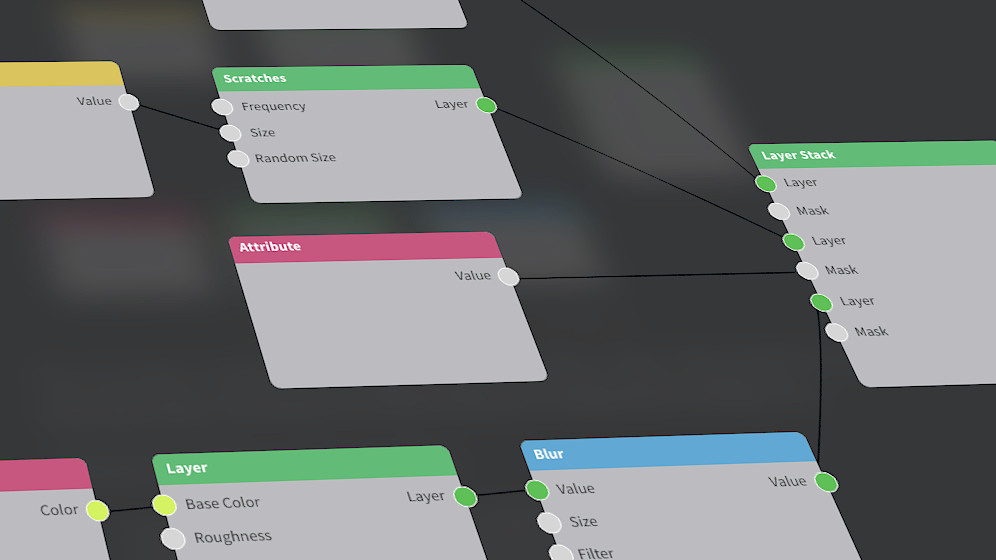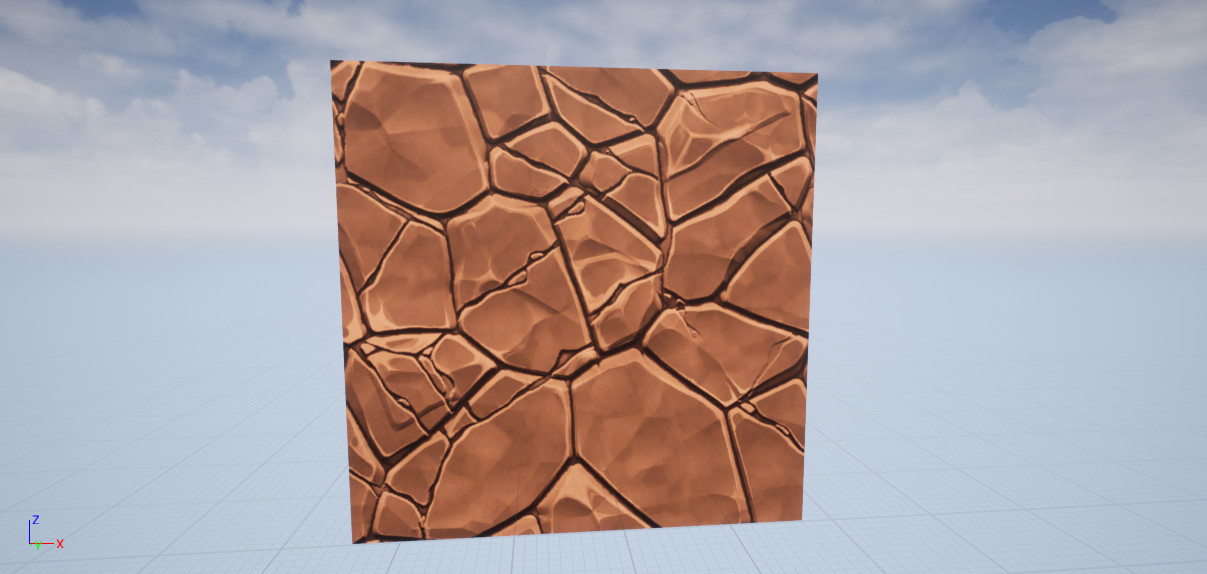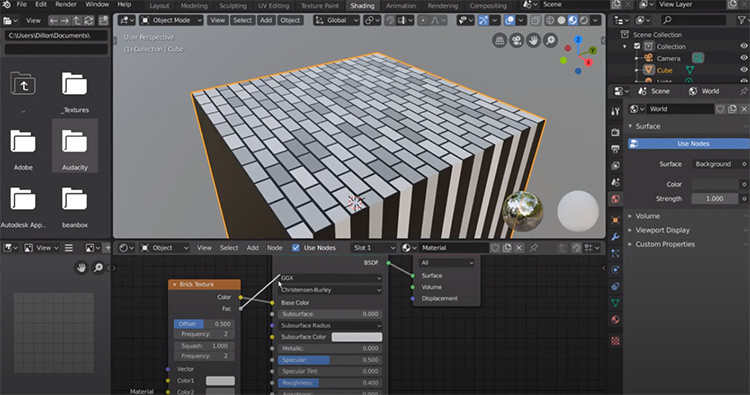Textures
Procedural Textures vs Hand Painted Textures: Advantages and Disadvantages
When it comes to creating textures for 3D models and scenes, there are essentially two methods: using procedural textures or hand-painting textures. Both have their unique advantages and disadvantages that should be carefully considered before making a decision on which method to use. In this blog post, we'll explore the benefits and drawbacks of each approach and provide some guidance on when to use each technique. Whether you're a seasoned pro or just starting in the world of 3D graphics, this article is sure to offer some valuable insights into the world of texturing.
- 1. Procedural Textures: Benefits and Drawbacks
- 2. Hand-Painted Textures: Pros and Cons
- 3. Memory Requirement: Procedural vs. Hand-Painted Textures
- 4. Resolution: How Do These Textures Compare?
- 5. UV Mapping: An Important Consideration
- 6. Achieving Photo-realistic Look: Which Method Is More Effective?
- 7. Repeating Patterns: Which Method Is More Efficient?
- 8. Unique and Personalized Textures: The Advantage of Hand-Painting
- 9. Guided Procedural Texturing: Incorporating the Best of Both Worlds
- 10. Bandwidth Consideration: Transferring Textures in a Digital Workflow
1. Procedural Textures: Benefits and Drawbacks
Procedural textures offer several benefits and drawbacks that are worth considering when selecting which method to use. One of the key benefits of procedural textures is that they use less memory and have infinite resolution, making them an ideal choice for game developers or users working with digital media. Additionally, procedural textures don't require UV mapping, streamlining the workflow process. However, achieving a photo-realistic outcome can be challenging and requires more effort than hand-painted textures. Furthermore, if you plan to generate texture on runtime, this can cause a significant hit to performance. Nevertheless, the ability to create arbitrary procedural noise can provide a unique look that is impossible to achieve with hand painting. Ultimately, the choice between procedural and hand-painted textures depends on the specific project and desired outcome.

2. Hand-Painted Textures: Pros and Cons
Hand-painted textures can offer a lot of benefits to artists, but they also have some drawbacks compared to procedural textures. One of the biggest advantages of hand painting is the ability to create unique and personalized textures that can't be replicated using a formula or algorithm. This can be especially important for assets that need to stand out or have specific details that are hard to capture using procedural methods. Hand-painting can also be a more practical choice for smaller projects or assets where procedural textures might be overkill or hard to justify. However, there are some downsides to hand-painting, including the time-consuming and sometimes tedious process of painting every detail by hand. Additionally, the quality of the textures can be affected by the skill level of the artist, which can be a concern if you're working on a team or collaborating with other artists. Ultimately, the decision to use hand-painted or procedural textures will depend on your specific needs and goals for the project at hand.

3. Memory Requirement: Procedural vs. Hand-Painted Textures
When it comes to memory requirements, it's clear that procedural textures have a significant advantage over hand-painted textures. Procedural textures use significantly less memory compared to stored textures since they only require a small set of parameters to create a texture, as opposed to storing an entire image. This lower memory requirement makes procedural textures ideal for distribution and real-time applications, such as game development. On the other hand, hand-painted textures can be memory-intensive since they require artists to create an entire image manually, which can quickly add up in file size. Despite this drawback, hand-painted textures offer unparalleled control over the final look of a texture, which makes them a great choice for creating personalized and unique textures. Understanding the memory requirements of both techniques is crucial when deciding which method to use for a particular project.

4. Resolution: How Do These Textures Compare?
When it comes to resolution, procedural textures have a clear advantage over hand-painted textures. Since procedural textures are generated through mathematical equations or algorithms, they can be scaled infinitely without losing resolution. On the other hand, hand-painted textures need to be created at a fixed resolution and then scaled as needed, which can result in pixelation or loss of detail. However, it's important to note that achieving a photo-realistic look with procedural textures often requires more effort, as it can take longer to tweak the mathematical algorithms to get the desired result. Overall, when it comes to resolution, procedural textures are the way to go if you need scalability and high resolution, whereas hand-painted textures are better suited for creating unique and personalized textures.
5. UV Mapping: An Important Consideration
UV mapping is an important consideration when it comes to texturing, and it's something that both procedural and hand-painted textures need to take into account. With hand-painted textures, creating a UV map can be a time-consuming process, especially if you're hand-painting every texture. However, once you have a UV map, you can be sure that your textures will fit the model perfectly. Procedural textures, on the other hand, don't require UV mapping, which can be a major advantage. However, this can also be a disadvantage because you may not have as much control over how the texture is applied to the model. That being said, there are tools available that can help you create UV maps for procedural textures, so it's something to consider if you want the best of both worlds.

6. Achieving Photo-realistic Look: Which Method Is More Effective?
When it comes to achieving a photo-realistic look, both procedural and hand-painting methods have their benefits and drawbacks. While procedural textures can generate infinite resolution and require less memory, achieving a truly photo-realistic look may require more effort. On the other hand, hand-painted textures can offer unique and personalized textures but may require more time and skill to create. Ultimately, the most effective method will depend on the specific project and the preferences of the artist. However, guided procedural texturing offers a promising solution that combines the benefits of both methods. By incorporating the guiding hand of an artist with the limitless possibilities of procedural texturing, it's possible to create stunning, photo-realistic textures that also offer a touch of originality and personalization. It's important to consider all factors, including memory requirements, UV mapping, and how repeating patterns are handled, but with careful consideration and a willingness to experiment, it's possible to achieve the perfect balance between procedural and hand-painted methods.

7. Repeating Patterns: Which Method Is More Efficient?
When it comes to creating textures for objects with repeating patterns, both procedural and hand-painted methods have their advantages and disadvantages. Procedural textures offer infinite resolution and require no UV mapping, making them efficient for objects with highly geometric shapes. On the other hand, hand-painted textures allow for unique, personalized textures and are effective for achieving a photo-realistic look. However, when it comes to repeating patterns, procedural textures are more efficient as they can be easily generated and repeated without noticeable seams or inconsistencies. Overall, the choice between the two methods depends on the specific needs of the project and the desired outcome. It is possible to use a combination of both methods, using guided procedural texturing to create repeating patterns and adding hand-painted textures for personalized touches.

8. Unique and Personalized Textures: The Advantage of Hand-Painting
When it comes to creating textures for props like weapons, vehicles, and clothing, hand-painting offers a unique advantage over procedural texturing. As an artist, I can create textures that are highly personalized and distinct, tailored specifically to the needs of my project. This level of customization is simply not possible through procedural texturing alone. Hand-painting allows me to experiment with different brushes and techniques, adding layer upon layer of detail to create a truly one-of-a-kind texture. And while procedural texturing can produce some stunning results, it falls short in terms of adding that personal touch that only a human touch can bring. In the end, it’s a matter of finding the right balance between procedural and hand-painted textures to achieve the desired level of detail and personalization for each project.

9. Guided Procedural Texturing: Incorporating the Best of Both Worlds
When it comes to texturing for games and other digital content, both procedural and hand-painted methods have their advantages and disadvantages. While hand painting can achieve a level of personalization and unique detail that procedural methods cannot, it can also be time-consuming and memory-intensive. On the other hand, procedural texturing can create efficient and seamless repeating patterns and can be more memory-friendly, but may not achieve the same level of photo-realism. However, what if we could combine the best of both worlds through guided procedural texturing? This approach would allow for the efficiency and repeatability of procedural methods while still allowing for a level of personalization and detail. By using algorithms and tools that take into account the designer's intentions and desired aesthetic, guided procedural texturing can achieve a hand-painted look while reducing the time and memory requirements of manual painting. It's an exciting development that shows the potential for technology and creativity to merge and evolve.

10. Bandwidth Consideration: Transferring Textures in a Digital Workflow
When it comes to digital workflows, bandwidth considerations play a crucial role in the transfer of textures. Whether you are using procedural textures or hand-painted textures, it is important to keep in mind the amount of data that needs to be transferred. Procedural textures, by nature, are generated on the fly and don't require texture files to be transferred between applications. On the other hand, hand-painted textures can be quite large in file size, making it important to optimize the workflow as much as possible. This can be achieved through efficient compression techniques, or by finding ways to streamline the transfer process. Regardless of which method you choose, it is important to be mindful of bandwidth limitations and to plan accordingly to ensure a smooth and efficient digital workflow.